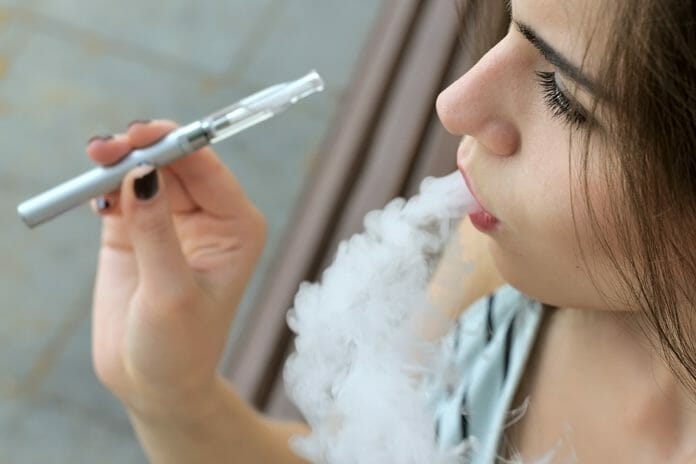Vaping & Tobacco
How much do you know about vaping and tobacco?
Get in your car and drive into town and pay close attention to the cars around you. If you see a billowing cloud of smoke rolling from within the car, you have found a “vaper” or e-cigarette user. I am amazed at the amount of smoke that a little, electronic device produced. This odorless fog of smoke vapor is actually a formaldehyde monster cloud! According to researchers, that’s not all it produces.
E-cigarette use has increased considerably in recent years, growing an astounding 900% among high school students from 2011 to 2015. Because of the marketing of the variety of flavors, and the claim of being less harmful than traditional cigarettes, many young children and teens are jumping on board.
What are E-cigarettes?
The e-cigarette is a device which allows users to inhale an aerosol containing nicotine, flavorings, and other additives. Other names commonly used for these devices are: “e-cigs,” “vapes,” “e-hookahs,” “vape pens,” and “tank systems.” E-cigarettes are composed of a battery, a reservoir (for containing the liquid), heating element or atomizer, and a mouthpiece.
The e-cigarette heats the liquid creating an aerosol that the user inhales. This aerosol is a hydrocarbon and is the most cancer causing agent in e-cigarettes. E-cigarettes are available in a variety of shapes and forms. Trending currently is the JUUL, which is a device that mimics a USB drive. Some users are even building or modifying their own e-cigarettes because of the availability of component parts. These devices are referred to as “mods.”
The Liquid
E-liquid currently comes in an estimated 7,700 flavors. Many vape shops (and they are everywhere) allow for custom flavors, thus attracting even a larger clientele. Flavors are broad and come in fruit, candy, coffee, and exotic flavors, such as Fruity Pebbles. Flavors help to mask the tobacco flavor and attract a younger audience.
However, some flavoring is said to have diacetyl, a chemical linked to serious lung disease. E -liquids are also comprised of nicotine, heavy metals (tin, lead, nickel), volatile organic compounds, ultra-fine particles, propylene glycol/vegetable glycerin, and cancer-causing chemicals. During the heating process of the liquid, additional toxicants are created. Studies report e-liquids labeled nicotine-free, were said to have been positive for nicotine when tested.
Flavorings Take-aways:
- Flavorings produce respiratory inflammation and lead to fibrosis of the lungs. Ever heard of popcorn lung? This originated in the Orville Redenbacher popcorn factory where diacetyl is added as the “butter flavor”. A $20 million dollar lawsuit resulted in more protection for their workers (respiratory masks) and less diacetyl being used. Check out more details of this story here.
- Metals from the battery are absorbed into the lungs with vaping. they are not exhaled and remain forever.
- Vaping moisture turns it into vapor so these toxins go deeper and longer into lungs.
Puff the Not So Magic Dragon
One of the many arguments of e-cigs is the ornate ability to control the variables in nicotine consumption. However, just because the e-liquid purchased may contain a lower nicotine amount, doesn’t mean the user is actually consuming less. Studies show experienced e‑cigarette users were found to have puff volumes that were significantly higher.
JUUL e-cigarettes are very popular among teens due to its discreet shape and have recently dominated the market with an increase of 769% in sales over the last year. One JUUL pod contains as much as a pack of 20 regular cigarettes. E-cigarette usage may not instantly impact the body, just as regular cigarettes may not produce instantaneous symptoms.
An Epidemic
The volume of consumers is skyrocketing quickly with high school students creating a soar in these numbers. Recent studies indicate roughly 3 million high school kids are currently using e-cigarettes, up from 1.7 million from last year, according to the CDC. The quickly increasing rate of adolescent usage has FDA Commissioner, Scott Gottlieb, labeling this problem as reaching epidemic proportion.
Did you know? If you aren’t a regular nicotine user by 21, you are 85% likely not to smoke for life. Repeat: If you aren’t a regular user by 21, you are 85% likely not to smoke for life.
While adolescents are creating a startling rise in the e-cigarette community, U.S. adults are not helping the numbers. Roughly 10.8 million American adults are currently using e-cigarettes. While some people claim to have picked up the habit of e-cigarettes to assist in the cessation of conventional cigarettes, there are no concrete studies which suggest this is a proven method. In fact, instead of quitting 59% become dual users.
The FDA has recently made strides in attempting to combat this epidemic. In June 2018, the FDA led one of the largest coordinated enforcement efforts in FDA history which resulted in 1,300 warning letters and fines to retailers who sold e-cigs to kids. They will now be removing all flavorings of the “juice” by 2021.
The battle has just begun, and unfortunately, it will take mounds of education and effort to diminish the usage of e-cigarettes. As dental professionals, we are given the gateway of opportunity to spread that knowledge to our patients who are currently using or even considering e-cigarettes.
Nicotine
Nicotine does not cause cancer, all of the 4,799 other ingredients in the e-cigarettes do. Did you know that nicotine is more addictive than heroin or cocaine because of the nicotine receivers in the brain. This nicotine gene is the “addictive gene” and explains why some people can become addicted, some can be “social” smokers and still others have no addiction by smoking.
By Jeffrey L. Angart, DDS
References TodaysRDH.com


